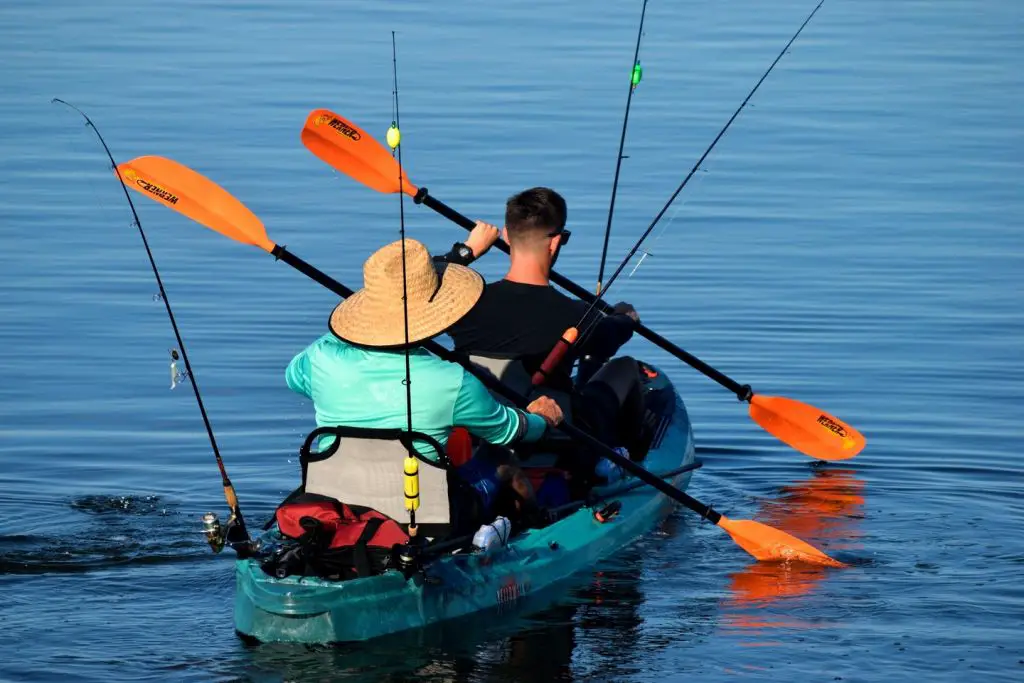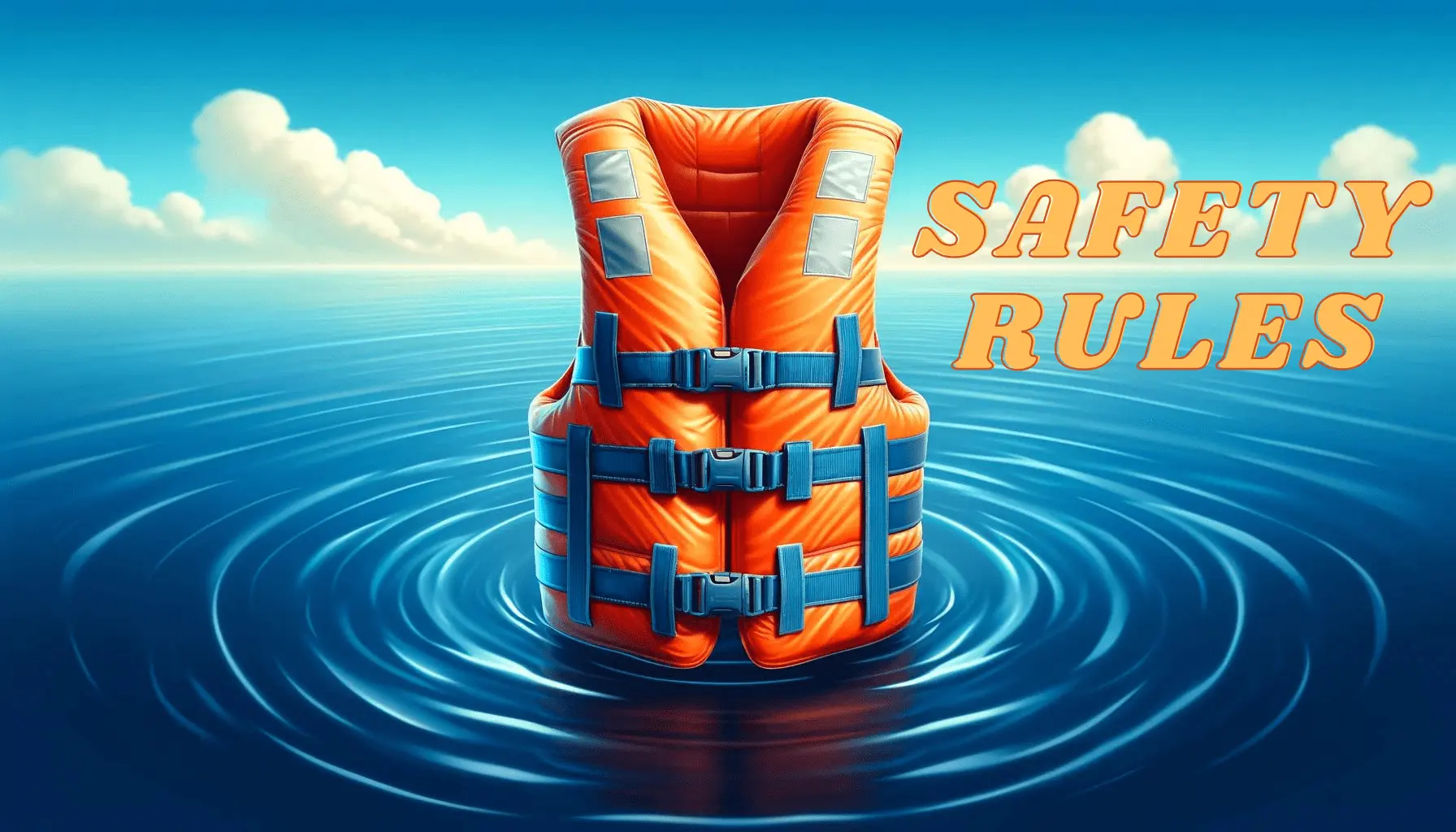So, you want to bring more gear along with you on your kayaking adventures. For whatever reason—more snacks, camera gear, fishing gear, or maybe you are delivering packages with scientific materials for environmental studies.
Whatever it is, I’m sure you have a perfectly excellent reason to increase the weight capacity of your kayak.
In this article, I will give you the know-how and methods to understand how to increase the weight capacity of your kayak.
But before you do so, there are a few things to know. It’s better to cross your t’s and dot your i’s.

What is a kayak’s weight capacity?
The weight capacity of a kayak is a manufacturer’s guideline for their boat. It serves to prevent you from overloading the kayak.
While you won’t immediately sink if you overload your kayak within a few minutes of setting out on the water, you need to adhere to this weight capacity guideline sensibly.
You also need to adopt techniques and methods to prevent you from taking on water, which will happen at some point in your trip, especially if the kayak is overloaded.
Learn more about a kayak’s weight capacity in the video below.
How to increase weight capacity of kayak?
There are many ways to increase the weight capacity of a kayak. Some of the methods may seem counterintuitive, but hang in there. It will become clear how all the techniques can help keep you safe while you achieve your goal of bringing on more gear.
The design of the kayak affects the weight capacity
The design of your kayak is the most important factor in how you can increase your kayak’s weight capacity. Different kayak designs have specific purposes, and it would become a mountainous task to alter a plan to fit other purposes.
For example, touring kayaks have a very narrow hull because they are a mix between sea kayaks and recreation kayaks and are meant for longer paddling journeys in relatively calmer waters.
Although touring kayaks typically have more storage than recreation kayaks, they are sit-in kayaks, and you would struggle to use them for fishing.
Fishing kayaks are sit-on-top kayaks and have different hull designs. Essentially, altering a kayak from a sit-in design to a sit-on-top design will prove challenging, and although it’s possible, it might be best to start with a boat that fits the majority of your needs.
See this video below to learn more about the various types of kayaks, their features, and their purposes.
The simplest way – change the location
The simplest way to increase the weight capacity of your kayak is to paddle in a different location. Surprisingly simple, but true.
The aim of going to a different location is to reduce the impact of overloading your kayak, which you should avoid.
Let’s say you have a recreational kayak that is about 13 feet; although it is a decent all-rounder, it is not as effective in rough waters as a white-water kayak. So, calmer waters will be a good strategy to reduce capsizing and sinking.
Furthermore, saltwater bodies with calm waters may be the best compromise, as salt water improves the buoyancy of all objects, including kayaks.
You can use different devices
If you have decided not to alter the design of your hull but are still looking to take on more weight, some devices can assist in this quest. Specifically, buoyancy bags and stabilizers.
Buoyancy bags for the kayak
As the name suggests, buoyancy bags are effective airbags that you can put in the bulkheads of your boat.
You can fill them with oxygen or helium; helium is more effective because of its chemical nature and is lighter than oxygen. However, either of them can allow you and your boat to float for longer and thus travel further.
This is a great method of how to increase the weight capacity of a kayak. The bulkhead’s purpose is buoyancy, and by adding airbags, you simply supercharge the effect of the buoyancy.
Outriggers system for the kayak
As great as airbags or buoyancy bags are, they can be counterproductive to the purpose of increasing the weight capacity of your kayak. The fact that you have to put the airbags into the bulkheads is the main reason.
Bulkheads are also storage areas where you would want to keep your gear. But getting help from floatation devices can be a great strategy.
Rather than using up storage space, you can install an outriggers system that is mounted on the outside of the kayak. This frees up space inside for the storage of gear inside the hull. There can be some added benefits to using outriggers.

In the picture above, you can see what they look like and how to use them.
Other than freeing up storage, they can also help balance the boat in rough water and give better stability when you stand up to reel in fish on a boat, especially if you have a sit-in kayak and want to use it for fishing.
You will recall that sit-on-top kayaks are designed for standing when you are fishing.
Learn new techniques for paddling
There are different ways to paddle in different kinds of water and in various kinds of kayaks. Learning how to match all three—the paddling technique, the body of water, and your kind of kayak—is going to be important to managing the load on your kayak as well as fatigue from paddling during and after.
It may seem like a small gain, but trust me, you are going to need as much incremental gain in efficiency on your trip as possible.
Fatigue can cause you to make poor decisions as the journey continues. So you will want all your faculties to make the best choices when you are on your trip.
Change your kayak equipment
As mentioned earlier, altering the design of your kayak’s hull might be possible, but because it is costly in terms of effort and money, it might be better to get a new boat altogether.
Additionally, safety should be your primary concern, and it is extremely difficult to alter the hull without compromising its integrity. If the hull is compromised, it can take on water or break at an unfortunate time.
So, it’s best to leave tinkering of this nature to experienced boat builders and buy a new kayak that can serve your needs.
Again, watch this video to find out what the best kayak is for your needs.
What’s the closest I can get to the weight capacity?
Working with theoretical figures here, we shall break down how close you can get to the weight capacity of your kayak.
Remember that the weight limit should also include your weight and all other gear and knick-knacks you put on your kayak. And also keep in mind that every manufacturer has their own guidelines, but usually you want your total weight to leave 20–30% of the room; being closer to 30% is better than being closer to 20%.
That means, for a weight limit of 300 pounds, you want to leave 90 pounds of headroom.
That is, you and your gear should weigh a total of 210 pounds. But with the methods for how to increase the weight capacity, you can maybe go over the limit by 5–10 pounds with confidence.
How much should the kayaking gear weigh?
To continue with our figures from earlier, a kayak with a weight limit of 300 pounds.
You and the kayak gear you intend to bring should all be less than or the same as 210 pounds.
If you weigh 200 pounds, your gear should weigh 10 pounds. If your gear weighs 50 pounds, that would make your total weight 250 pounds. And according to our calculations, the new weight limit should be about 360 pounds, but remember that this new weight limit should be on a new kayak with this weight capacity rated by the manufacturer.
Additionally, as a regular boat person, you will want to have one or two large kayaking dry bags. With these, you can put all your gear together and weigh it in one shot as opposed to weighing the individual items and then adding them together to get the total gear weight.
Conclusion
Unfortunately, these techniques and methods for increasing the weight capacity of your kayak won’t double its weight capacity.
However, the techniques will improve buoyancy and allow you to add a bit more weight and still have your boat stay afloat.
Ultimately, the techniques will give you confidence that you will not sink while you and your gear are close to or slightly above the weight capacity of your kayak.



